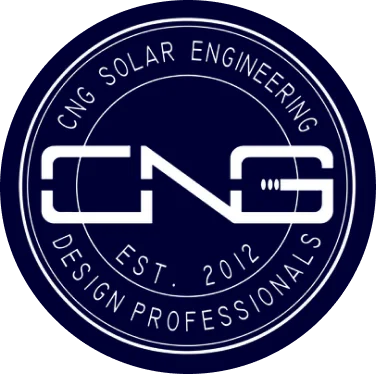Take your solar installation company to the next level by partnering with experts in solar system designing.
As a solar installation company operating in California, you’re at the forefront of the renewable energy revolution.
But to serve your clients effectively, it’s crucial to understand the intricacies of designing a solar system. Remember, a well-designed system is necessary so you can carry out the installation properly.
To guide you, this blog will tell you everything you need to know about the designing process. So make sure to read to the end to not miss any important details.

Understanding the California Solar Landscape
Before delving into the specifics of home solar system design, let’s take a look at the broader context:
- California’s Renewable Energy Goals: California has set ambitious renewable energy targets, aiming for 100% clean energy by 2045. This commitment creates a robust market for solar installations.
- Incentive Programs: Familiarize yourself with the various state and federal incentives available to homeowners and businesses. Understanding these programs will enable you to provide valuable information to your clients.
Best Practices for Solar System Design
For solar system designing, here are the best practices:
- Site Assessment: Conduct a thorough assessment to determine the specific needs and constraints of each installation. Factors such as shading, roof condition, and local regulations play a vital role in system design.
- Sizing: Properly size the solar system to meet your client’s energy requirements. Oversizing or undersizing can lead to inefficiencies and financial losses.
- Panel Selection: Choose high-quality solar panels with a focus on efficiency, durability, and warranty. Understand the unique characteristics of various panel types, such as monocrystalline, polycrystalline, or thin-film.
- Mounting Systems: Select the appropriate mounting system based on the project’s location, whether it’s a rooftop or ground-mounted installation. The mounting system should ensure the panels’ stability and optimal angle for sunlight capture.
- Inverter Technology: Opt for the most suitable inverter technology, such as string inverters, microinverters, or power optimizers, depending on the installation’s size and complexity.
- Battery Storage: Consider integrating energy storage solutions, like lithium-ion batteries, to offer your clients the option of backup power and increased self-consumption.
Navigating Regulations and Incentives
As a solar installation company, you should also be knowledgeable of the state’s regulations and incentive programs. This includes the following:
- Net Energy Metering (NEM): Understand how NEM works and how it allows homeowners and businesses to earn credits for excess energy fed back into the grid.
- Federal Tax Credits: Stay updated on federal Investment Tax Credits (ITC) and how they can significantly reduce the upfront costs for your clients.
- California Solar Initiative (CSI): Be aware of state-level incentives, such as the CSI, which offers cash rebates for solar installations.
- Local Permitting: Each municipality in California may have its own permitting and interconnection requirements. Develop streamlined processes to navigate local regulations efficiently.
- Solar Rights Act: Ensure that you are well-versed in the Solar Rights Act, which protects your clients’ rights to install solar panels even if faced with neighborhood restrictions.
Enhancing Customer Experience
Lastly, a successful solar installation company goes beyond technical expertise. Exceptional customer service is essential. So, keep the following in mind:
- Education: Educate your clients about the benefits of solar energy, the installation process, and potential cost savings. An informed customer is more likely to make a decision.
- Transparency: Provide transparent pricing and clear explanations of all costs, including equipment, labor, permits, and maintenance.
- Quality Assurance: Implement robust quality control processes to ensure that installations meet or exceed industry standards.
- Maintenance Services: Offer ongoing maintenance and monitoring services to maximize the longevity and efficiency of your clients’ solar systems.
Embracing Innovation
To stay competitive and meet the growing demand for solar energy solutions in California, consider embracing innovative technologies and practices:
- Advanced Monitoring Systems: Invest in advanced monitoring systems that allow you and your clients to track energy production and system performance in real-time. This data can help identify issues proactively and optimize energy production.
- Artificial Intelligence (AI): AI can be used to predict energy production and consumption patterns, allowing for more accurate system design and energy optimization.
- Energy Efficiency Solutions: Offer energy efficiency services alongside solar installations. Implementing energy-saving measures can enhance your clients’ overall energy sustainability and reduce their bills.
- Collaboration: Collaborate with other renewable energy companies, such as professional solar system designing, to offer integrated solutions that meet a broader range of your clients’ needs.
Collaborate with CNG for Expert Solar System Designing!
Take your solar installation company to the next level by partnering with CNG Solar Engineering. We will expertly design your solar system projects so you can focus on what you do best — the installation. Save time by letting our experienced team handle all things related to design. Contact us today and we’ll walk you through our processes.
CNG Solar Engineering
Book now for a free estimate
BOOK NOW

